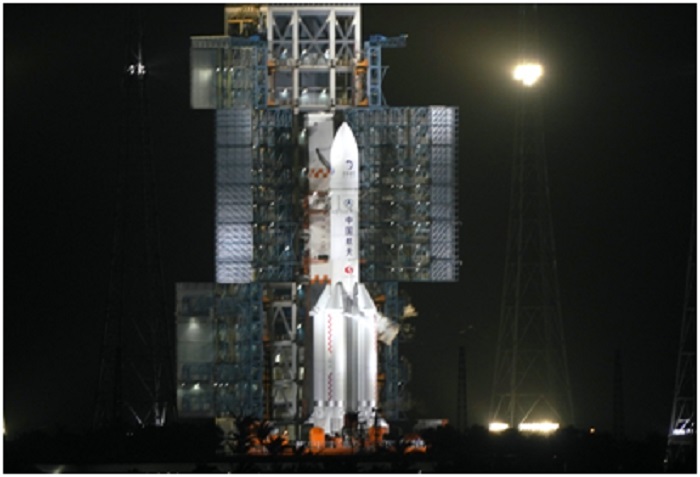



The China National Space Administration (CNSA) rolled out on Monday regulations on the management of lunar samples brought back to Earth by the country’s Chang’e-5 moon probe, which is an important manifestation of China’s efforts to carry out practical international cooperation and exchanges on studying the samples.
The CNSA, together with the Chinese Academy of Sciences (CAS), held the “Access to China’s Lunar Exploration Program” activity on Jan. 18, during which officials from foreign embassies in China and international organizations were invited to visit the lunar sample storage and processing facilities in the National Astronomical Observatories of China under the CAS, the overall unit for the ground application system of the Chang’e-5 mission.
The regulations on lunar sample management were introduced to participants in the activity, which were attended by representatives from France, Russia, the European Union (EU), the Asia-Pacific Space Cooperation Organization (APSCO) and other countries and international organizations.
Drafted by the CNSA, the document on moon sample management covers general provisions concerning the preservation, management, and usage of lunar samples, as well as detailed rules for information release, borrowing, distribution, use and return of moon samples.
“According to basic uses, lunar samples are divided into four types in principle: permanently stored samples, permanently stored backup samples, research samples, and samples for public beneficial activities, of which permanently stored samples and permanently stored backup samples are sealed and maintained in a pristine state as original samples, research samples are used for scientific investigation and analysis, and the samples for public beneficial activities are used for activities such as exhibition, public outreach, and education,” the document said.
The CNSA’s Lunar Exploration and Space Engineering Center (LESEC) has been entrusted by the administration to carry out the management of lunar samples, according to the document.
The lunar samples are stored at the CNSA and its designated curatorial agencies. The main curatorial agency is the National Astronomical Observatories of the CAS, and a backup curatorial agency is also established.
The document stipulated that the main curatorial agency shall keep the lunar samples for a period of not more than six months after receiving them, and conduct preliminary sample handling to form relevant information according to different basic uses.
After the end of the above (initial) sample handling period, LESEC will publish lunar sample information to the public through data information platform, and update the sample information dynamically according to the status of sample requests, the document said.
In terms of international cooperation, the document stated that the management and use of lunar samples shall comply with relevant international conventions that the People’s Republic of China has established or adopted, and that the CNSA encourages lunar sample-based joint international research, and supports the international sharing of science results.
At the Monday event, the CNSA also awarded commemorative plates to international cooperators including the European Space Agency, Argentine National Space Activities Commission, Namibia Ministry of Higher Education, Training and Innovation, and Pakistan Space and Upper Atmosphere Research Commission, to thank them for their collaboration with China during the Chang’e-5 mission.
Based on the principle of equality and mutual benefit, peaceful utilization and win-win cooperation, the CNSA has actively carried out international cooperation in lunar exploration, Mars exploration, satellite projects and launch services to promote the common progress and long-term sustainable development of the space industry in recent years.
The Chang’e-5 lunar probe was launched on Nov. 24, 2020. The return capsule of the probe landed in Siziwang Banner, north China’s Inner Mongolia autonomous region 23 days later, bringing back the country’s first samples collected from the moon.
On Dec. 19, the lunar mission moved from the project implementation stage to a new stage featuring scientific research.
In the near future, China is expected to solicit cooperation proposals extensively and encourage researchers from home and abroad to carry out joint scientific research on the lunar samples to achieve more scientific results.


The Executive and members of the.


The Acting Director, FCT Directorate of.


President Bola Ahmed Tinubu has been.



Barely a month after resignation of.


An Abuja based Legal Practitioner, Osuagwu.



Convener of Equitable Remedy, Mrs. Magaret.


Contractors handling the contract for city.


Nigerian government may have concluded plans.


The Diplomatic Correspondents Association of Nigeria.


A rights group, “Follow Me Talk.
Leave a Comment